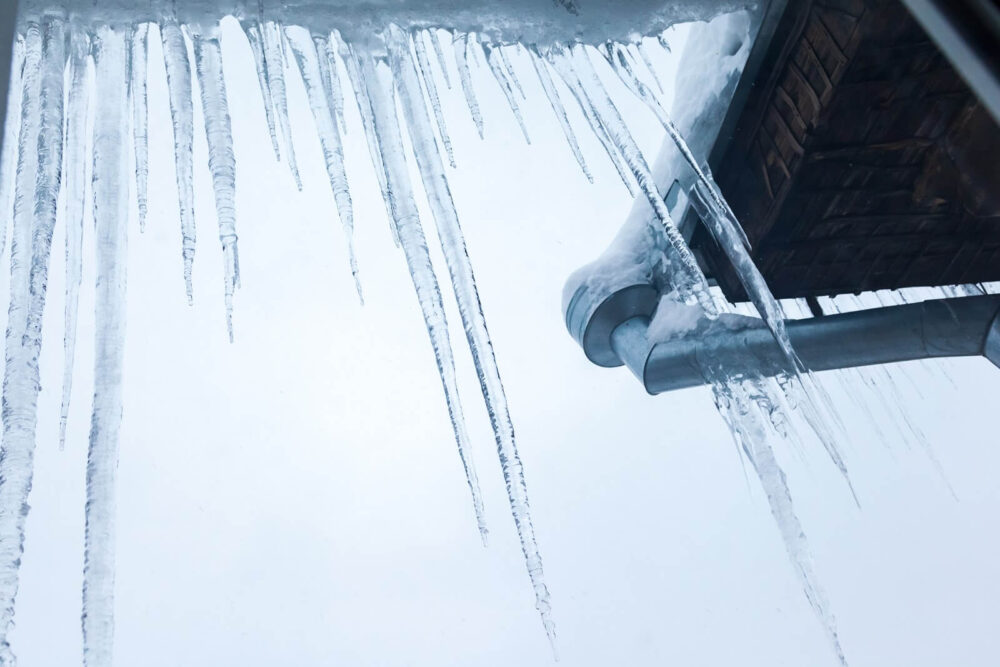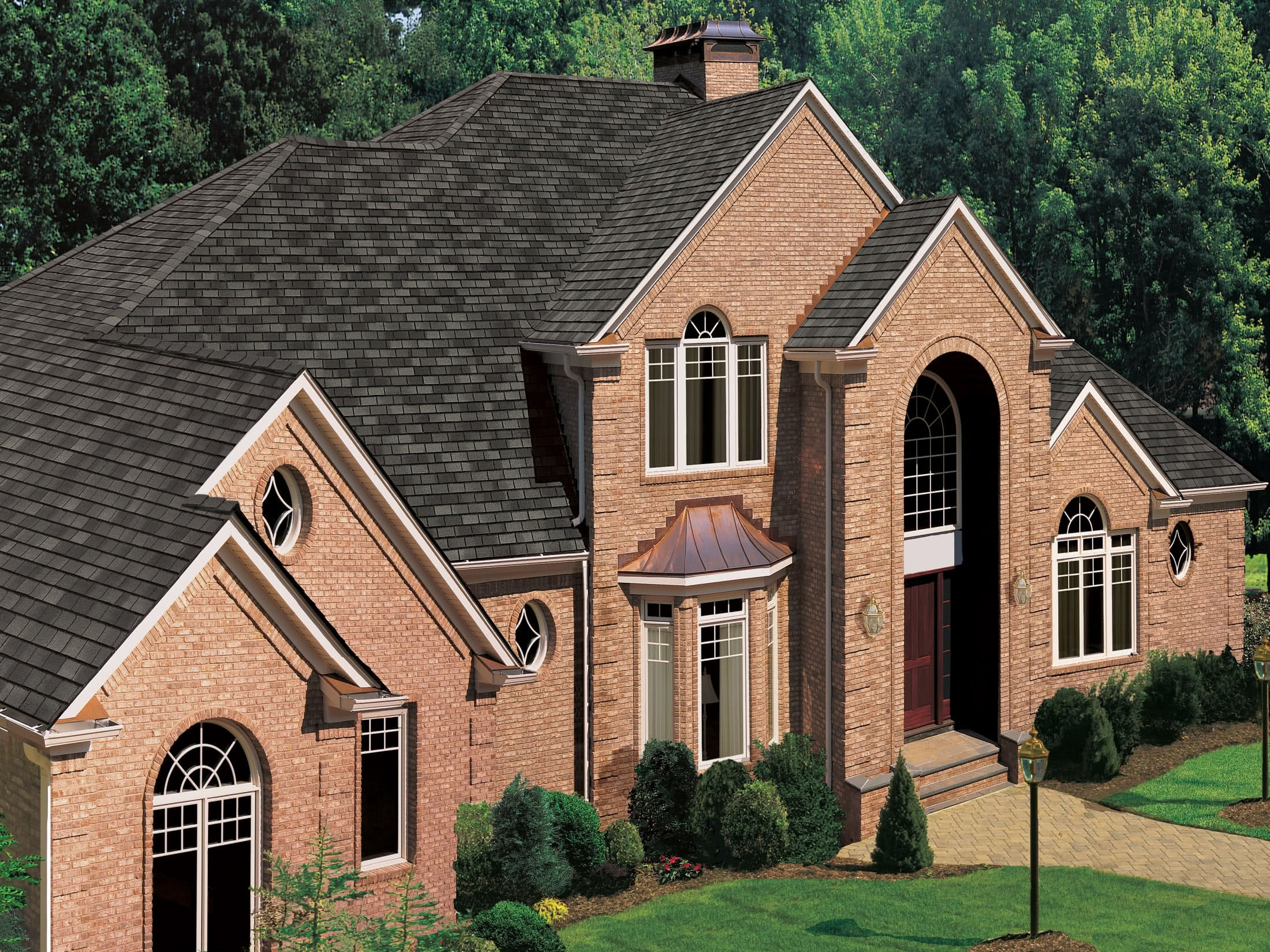Request Quote
Home | Our Blog | All You Need to Know About De-icing Systems for Your Roof
Reviewed by Tomas Kalkys. President.
Qualifications: More than 20 years of experience in residential and commercial exterior remodeling.
Founding farther of Legacy Service.
Written by LegacyUSA Team
posted on Mar 3, 2021
Get Estimates From Roofing Pros

Ice dams, icicles, and snow loads may look beautiful, but they can cause significant problems for the rest of your home and property. Ice dams are formed when melting snow doesn’t flow off the roof into the gutters and freezes instead when the temperature drops. The ice blockage creates that slows additional melting, which allows water to get underneath your roof’s shingles and penetrate the top layer of your home.
In the past, people would’ve dealt with ice dams with a shovel and a ladder, which is quite dangerous and not recommended. Fortunately, there are better ways to deal with them now thanks to innovative professionals and DIYers. The most popular options include roof de-icing cables, ice dam prevention products, and roof deicer systems. These help to prevent problems on roofs and ease any issues around eaves, valleys, drains, and pathways that are caused by ice and snow.
Not a real zip code.
At Legacy Service, we provide roofing installation and replacement services for homeowners throughout southeastern PA, NJ, and DE. If your roof is damaged beyond repair or getting up there in age, you should consider replacing it. Schedule a free estimate with one of our team members by contacting us today: https://legacyusa.com/contact/.

Depending on where you live, a deicing roof system can be highly beneficial for your house. Roof deicer cables are an effective and affordable solution when it comes to preventing ice dams. They’re easy to install as well. Cables are fastened into position over the eaves and also usually within the gutters, and they work by outputting heat to prevent melted snow from refreezing before it runs off the roof. Remember that ice dams may still form but will allow additional snow to melt, which is actually what protects your roof from excessive ice and snow.
The deicing systems you can choose from for your roof include:
Different types of heated roof systems will have varying costs. For example, the cost to install roof deicing cables will differ from the cost to install heat tape or heated gutters. Let’s take a look at the cost of installation for different types of systems:
In the next section, we’ll take a look at the installation process for heated roof systems.
Deicing roof cables are fairly easy to install. If you’re looking to do it yourself, then it’s recommended that you do your research beforehand and fully prepare before beginning the process. It’s best to have some installation experience under your belt as well. You might even want to grab a friend to help you out!
Ice tape is a particularly user-friendly version of roof deicing cable. The self-adhesive coil makes it simple to install for someone who’s comfortable on a ladder.
However, for the product to work, it has to be installed correctly. If you’re having any doubts about the installation process, you may want to contact a contractor to do it for you.
Not a real zip code.
You may be wondering when and how to use roof heating cables. Whether you need heating cables depends on the climate of where you live. If you live in a warm climate that doesn’t get snow or ice during the year, you won’t need them. But here’s another surprising fact: If the weather is too cold, you won’t need deicer cables either. These cables function best in “warm” cold weather, which is down to about -9°F. The reasoning for this is that ice dams are caused by snow melting, so they typically only form when the temperature is right around the freezing mark (32°F).
Whether you’re looking to install the deicing system yourself or you’re hiring a professional to do it for you, it’s a good idea to know the list of materials used for the project. Here’s everything that you may need for the job:
Before you begin your electric heating cable project, make sure you’ve gathered all the necessary supplies. If you’d like to replace your roof and add a heating system to it, please feel free to contact our team at Legacy Service. We’ll provide you with a free estimate.

Ice cables, also known as roof deicer cables, are the perfect solution for preventing snow and ice problems (especially ice dams) that could cause further damage to your roof. If you’re looking to install them on your house to help during the winter seasons, then you probably have some questions.
In this section, we’ve answered some of the questions that our team is most frequently asked about heat cables. Please read through them to see if they answer any of yours. If you’re looking to replace your roofing or siding, you can contact us to schedule a free consultation with one of our technicians.
You should turn on your roof heating cables about an hour or two before the snow is expected. This helps the roof warm up so that the snow can start melting immediately. If the cables are not warm enough when the snow starts to fall, they may become overwhelmed and not be able to catch up.
The cables should be left on while there’s still a significant amount of snow on the roof. This will vary depending on how much sunlight your roof gets. Some customers will be able to turn theirs off sooner than others. It’s recommended that you observe how your roof works during the first year to get a better idea down the line.
Modern heat tape can remain plugged in if it has a built-in thermostat. The thermostat automatically turns on the power (and in turn, heat) when the temperature drops to freezing and turns it back off when the temperature rises. Even though they remain plugged in, the tapes will not draw electricity all the time.
However, it’s a good idea to make sure the heat tape is properly installed and placed in a satisfactory spot. If it’s placed in the wrong spot, it can remain wet year-round, which would cause the wire insulation to develop cracks and let in moisture.
Roof heat cables are designed to prevent ice dams from forming. They work best if you turn them on about an hour or two before the snow is expected to start falling. This helps warm the roof up so that the snow will melt immediately as it falls on it.
Don’t worry if you forget to do it by that time, though. Turning the heat cables on at all will help prevent ice dams from forming. It’s also best to leave them on until a majority of the snow melts from your roof.
You may need to use a roof deicing cable calculator to determine how much you’ll need. In some of them, you can plug in your roof’s length, valley length, overhang width, roofing type, and region where you live. Once you hit ‘calculate,’ it will show you the recommended cable length, materials list, and even the potential cost.
You can also estimate it for yourself. You’ll need to measure the roof eaves (edge where the gutters are attached) to find the value of the roof length.
As always, if you’re unsure about your determining how much you’ll need or how to install it, you can always contact a roofing professional for guidance.
The average heat tape uses electricity at six to nine watts per foot per hour. So, if you have 100 feet of heat tape that operates 24/7, you can expect to add about $41 to $62 to your monthly electricity bill.
Some systems are self-regulating, meaning they’ll cycle on and off to minimize the budget for your electricity. This means that they’ll also be more expensive to buy and install, though. Ask your local contractor for specifics during the consultation if they’re installing it for you.
It depends on the type of heat tape you choose. Many of them can present a potential fire hazard if they’re not installed properly and used according to their instructions. For example, most cheap heat tapes may overheat and pose a real fire risk if they’re overlapped or insulated.
However, that can be prevented by using a quality heat tape, having it installed correctly, and remaining vigilant throughout its lifespan. Get in touch with your local roofing professionals if you’re looking to install heat tape. At Legacy Service, we offer roof replacement with snow and ice protection. To get started, all you have to do is give us a call.

Winter has arrived, so now’s the time to get started with your roof deicing system before the next big snowstorm hits. Whether you choose heat cables, heat tape, or another method entirely, you can be sure that they’ll last for years to come with the correct installation and proper maintenance.
At Legacy Service, we provide all types of home exterior services. Whether you’re in need of roofing installation for the home you’re building, siding replacement for a more beautiful and durable home, or window replacement to increase your house’s energy efficiency, you can turn to our team. If we install or replace your roof, don’t forget to ask us about snow and ice protection.
Make sure the job gets done right the first time with local home exterior professionals. We provide service to homeowners throughout PA, NJ, and DE. Schedule a free estimate by either calling us at 215-798-9790 or contacting us here: https://legacyusa.com/contact/.
Posted on Mar 3, 2021 in Roof
Read our news
HOW LONG SHOULD A ROOF LAST? ELEMENTS
A lot of elements play a role in maintaining the integrity of the roof, but as a homeowner, the most important components to pay attention to are the underlayment, ventilation, and material.
DIFFERENT TYPES - DIFFERENT LIVES
Choosing the best roofing material for your home is the first important step in ensuring that you have the highest quality roof possible.
METAL ROOF VS ASPHALT SHINGLE ROOFING
Two of the most popular roofing materials on the market are metal and asphalt, and both offer different pros and cons to a customer.
Pros and cons of Asphalt Shingle Roofing
Replacing a roof is an expensive decision, and cannot only come down to cost.


